

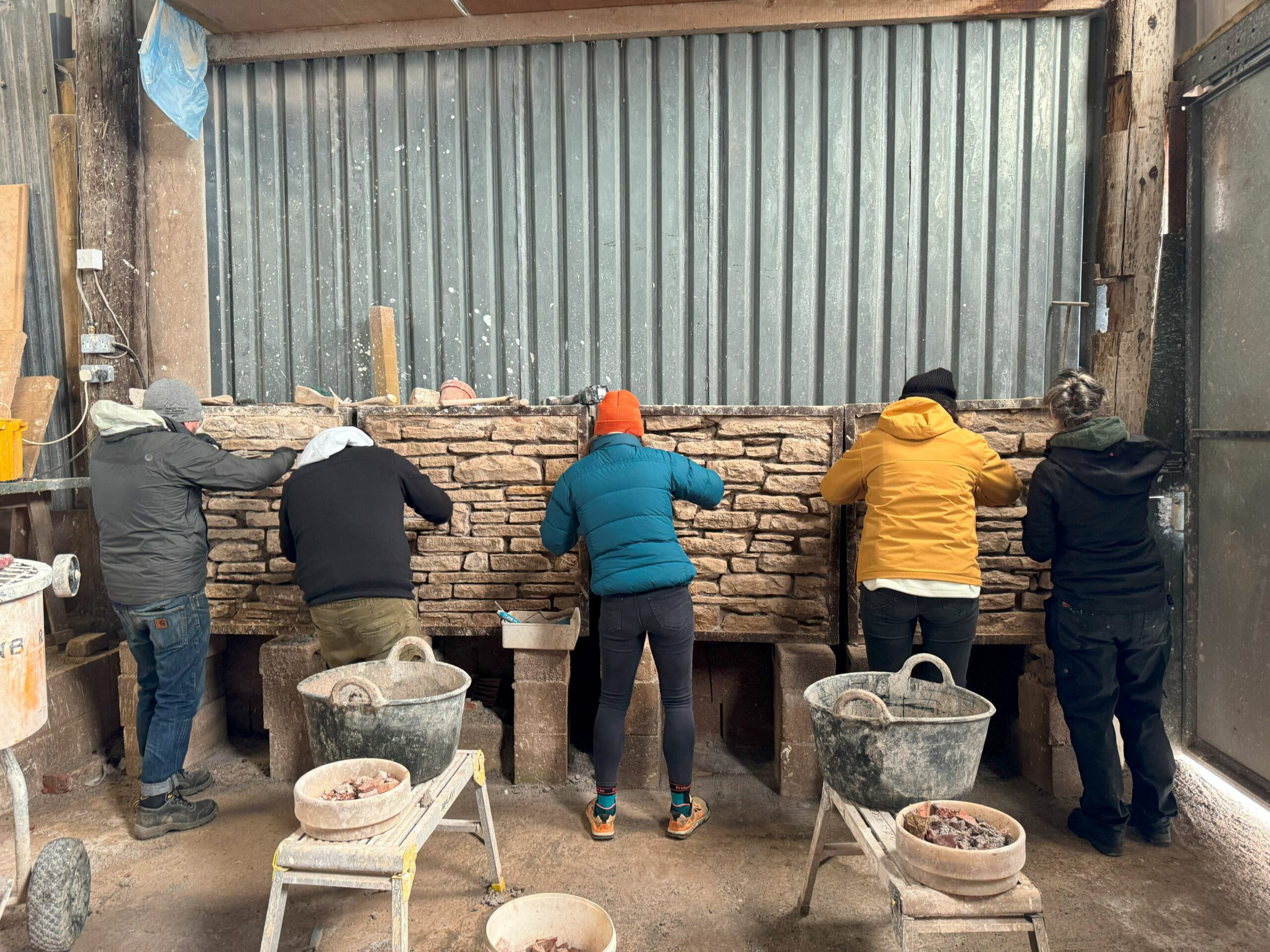
John Coward Architects recently embarked on a team outing for a Lime Mortar training day with Tim Wells at Eden Hot Lime Mortar near Kirkby Stephen.
Lime, or calcium oxide, is a traditional building material widely used as a bedding between courses of stones in a wall, i.e. mortar, it can be applied as a render over the face of the stones, used as plaster to finish internal walls and watered down to create lime paints. It is also used as ‘torching’; a method of applying mortar to the underside of roof slates for weatherproofing.
Confusingly, ‘lime mortar’ is a term often used in construction to refer to cement mortars with lime added to them for workability, but this is a very different beast to a traditional lime mortar.
The use of lime began to decline after the First World War, in part because of the loss of skilled workmen who never returned from fighting and in part because of the rise of cementitious materials which were ‘modern’ and quicker in terms of construction.
The Second World War saw a further loss of skilled workmen. As with many traditional skills and trades knowledge is historically passed down from father to son and / or apprentices, and was not commonly written down, therefore much of the technique and know-how was lost.
However, in recent years there has been a ‘lime revival’ as the problems which arise from using cement based products in buildings which have originally been built with lime became more apparent. It has taken time, patience, testing and feedback by people like Tim Wells and conservationists working with historic buildings to re-discover the art of using lime.
The training day starts with a talk through the history of lime and how we got to where we are now, the lime cycle and the science behind it. Tim demonstrates the method Eden Hot Lime now advise for mixing lime products. Hot lime isn’t a thing, it is a method!
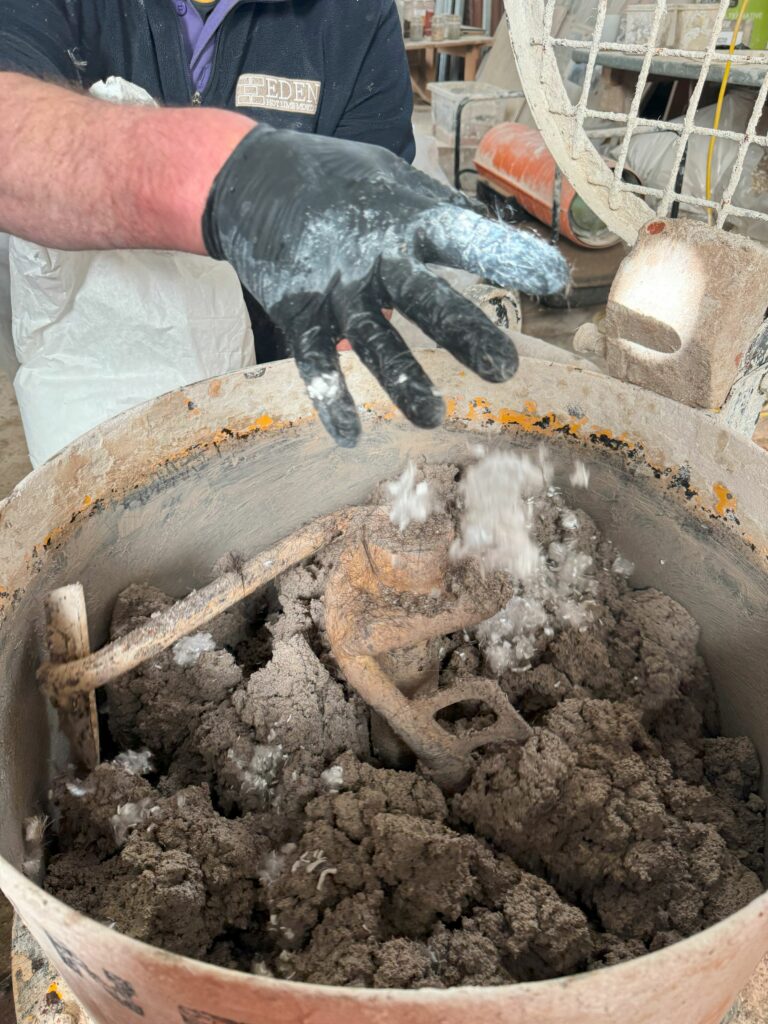
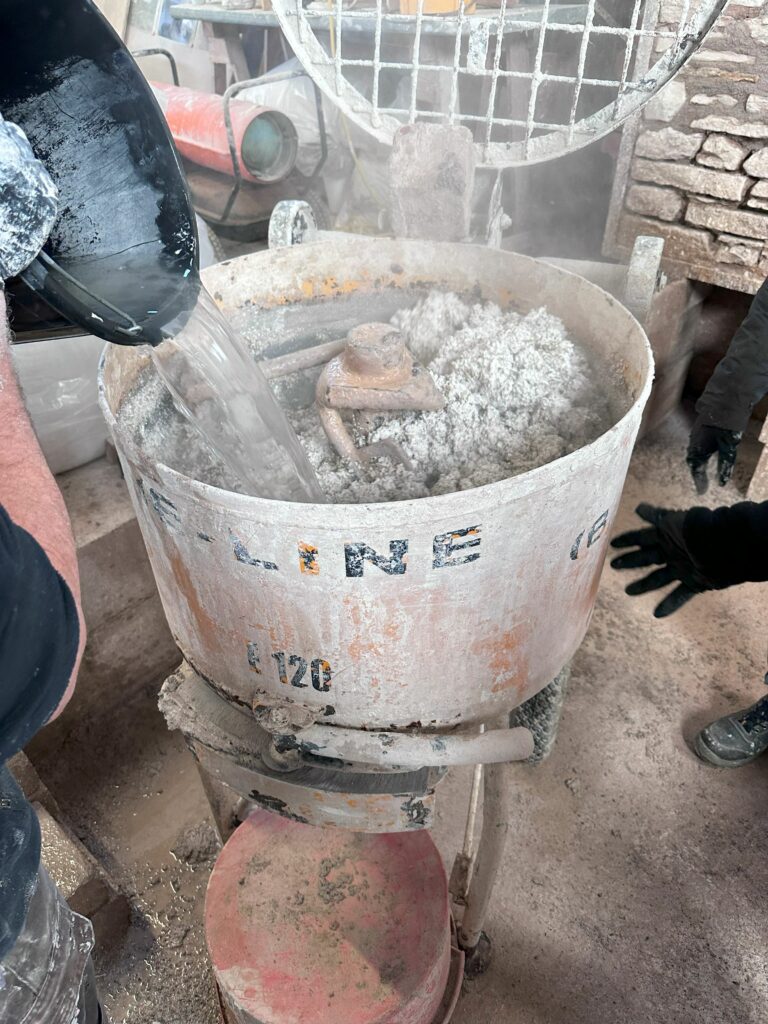
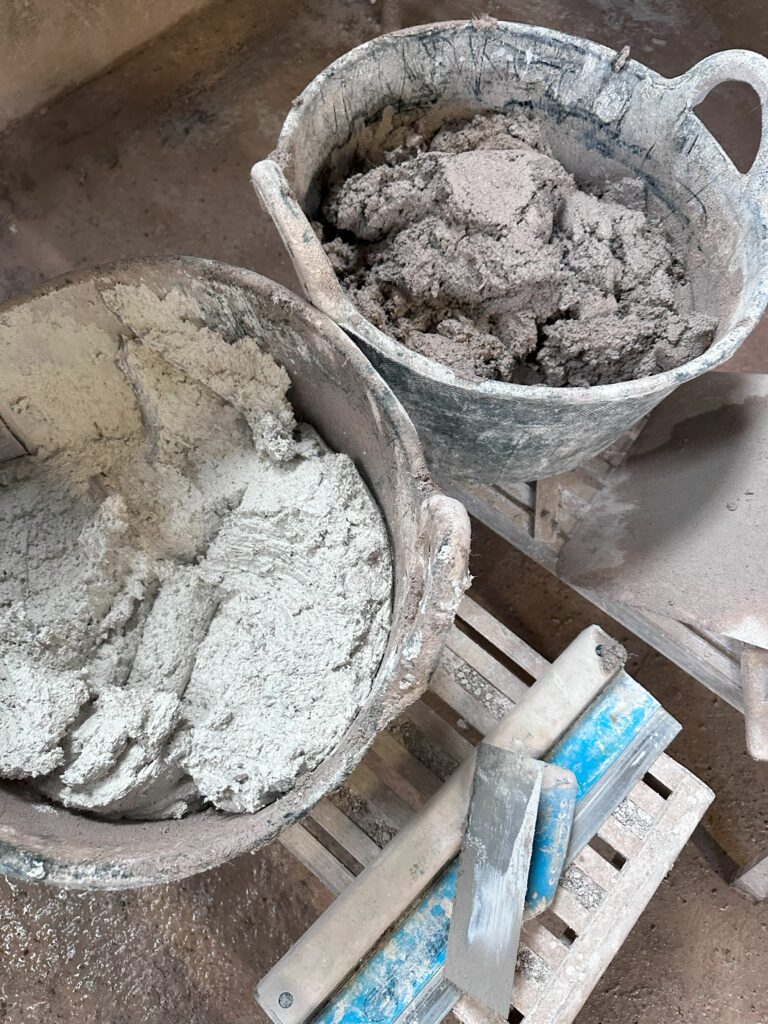
The starting point is quicklime, calcium oxide, which is a product of heating limestone or chalk to drive off carbon dioxide and leave calcium oxide. When quicklime is mixed with water, or slaked, the exothermic reaction results in calcium hydroxide and a lot of heat. The heat generated by even a small amount of quicklime and water is impressive, and once we started to work with freshly mixed plaster the warmth was much appreciated in a cold barn for cold hands (wear gloves)!
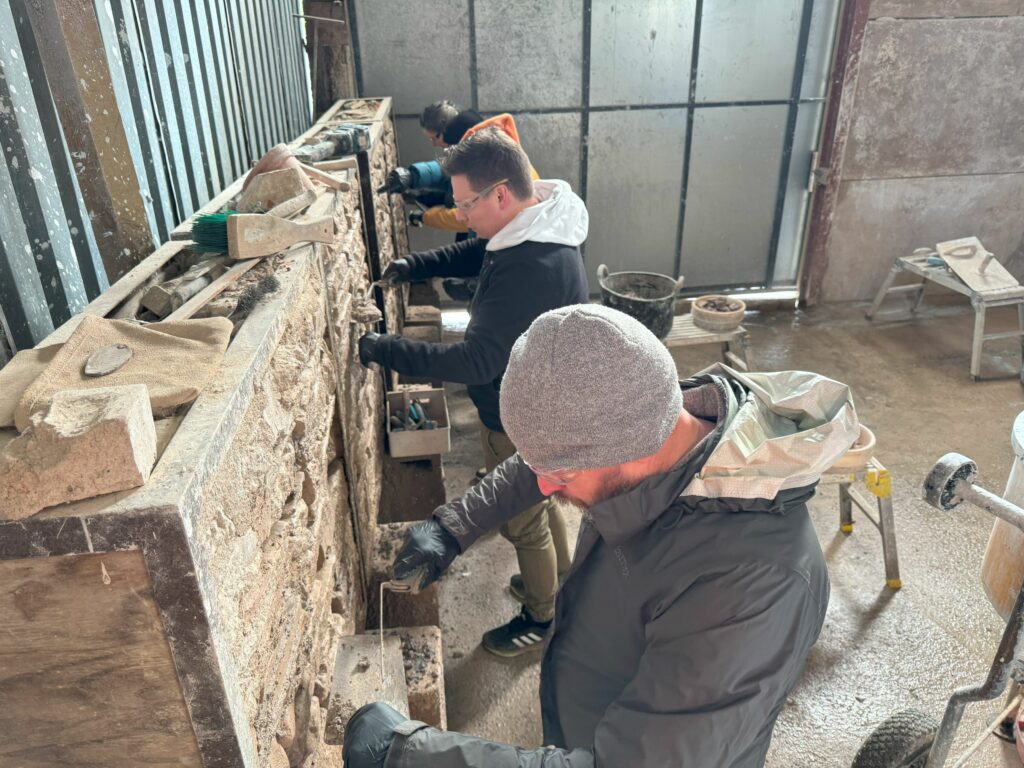
We were able to practice ‘pointing’ on a panel of stone wall, using a trowel and range of jointing tools to work the lime mortar into the back of joints and work forwards to finish with the mortar just slightly proud of the stone and lapping the edges. Once the mortar starts to dry, or go off, it is bashed with a churn brush to compact the mortar into the joint and give a slightly rough finish to the mortar. The rough finish increases the surface area, helping to allow the mortar to draw moisture from the stone and release it into the air
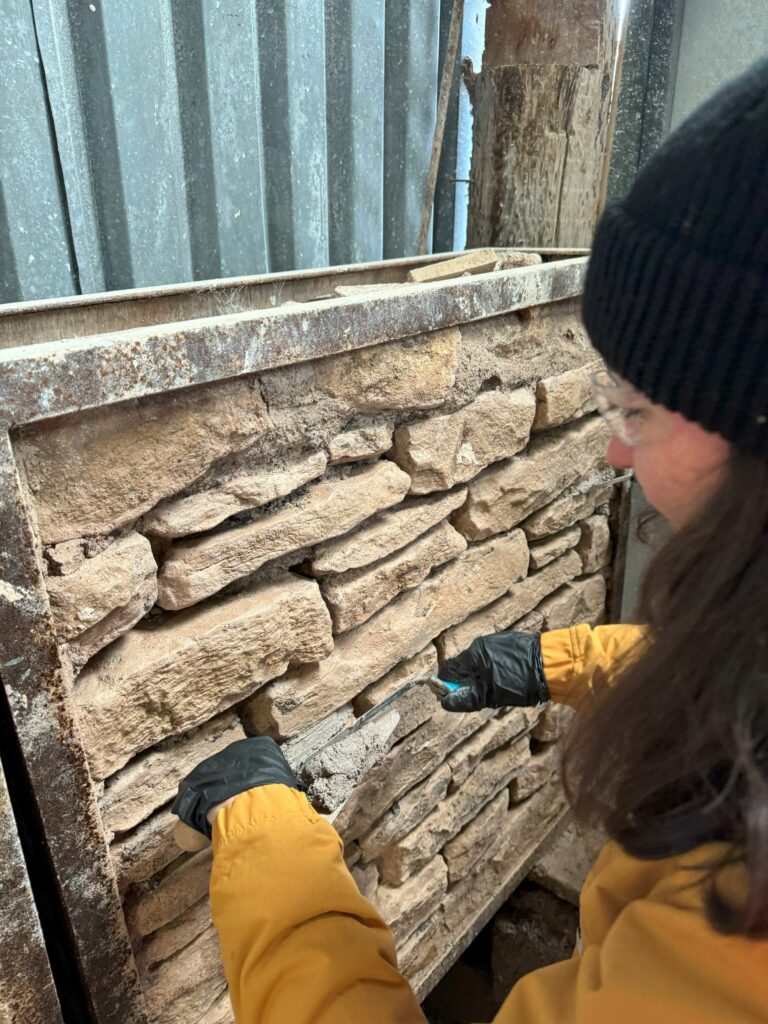
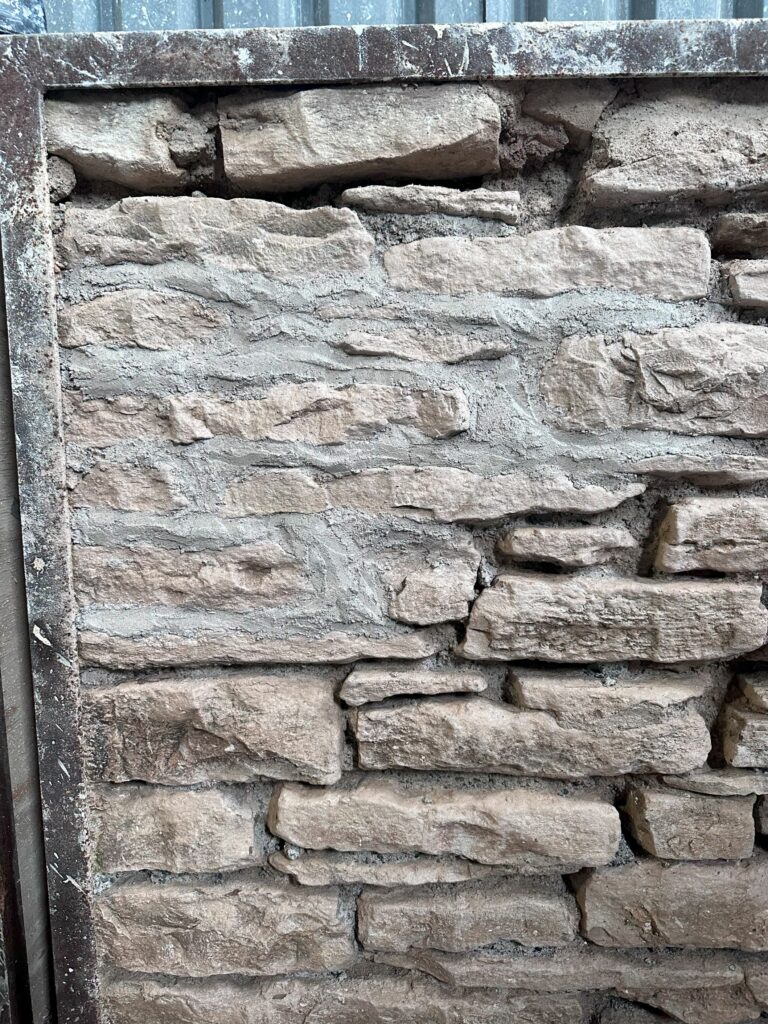
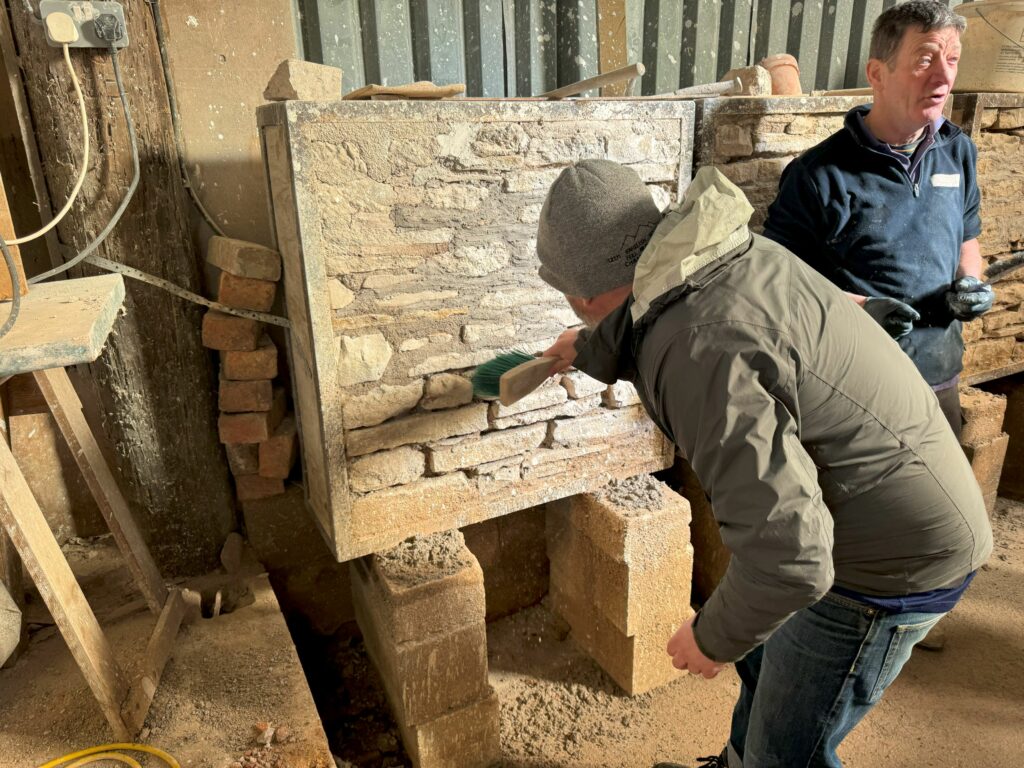
After lunch we had a go at applying lime mortar as a render onto a wall, or scratch coat, this requires a bit of shoulder power, technique and a good stance. Next up, applying an insulated lime plaster which was, curiously, easier than the render. The lime plaster contains fibres which provide better thermal performance whilst still allowing the lime plaster to do its thing. Finally, we tried our hands at the final plaster skim coat and mixing limewash to use as a paint. This is not as difficult as one might think!
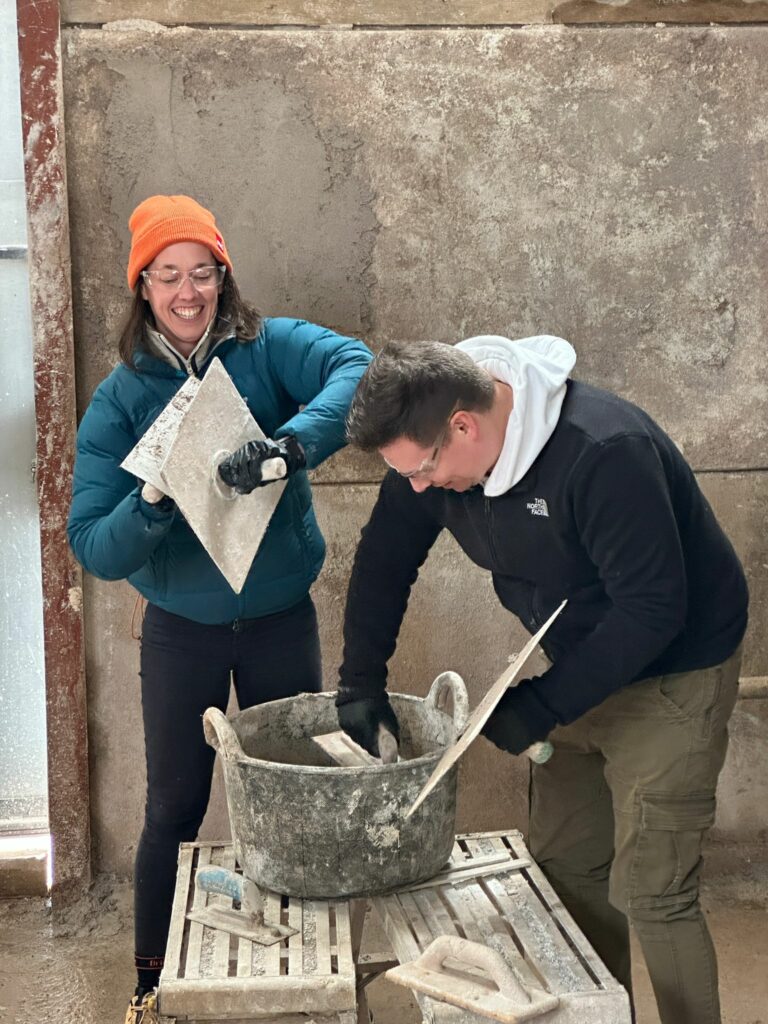
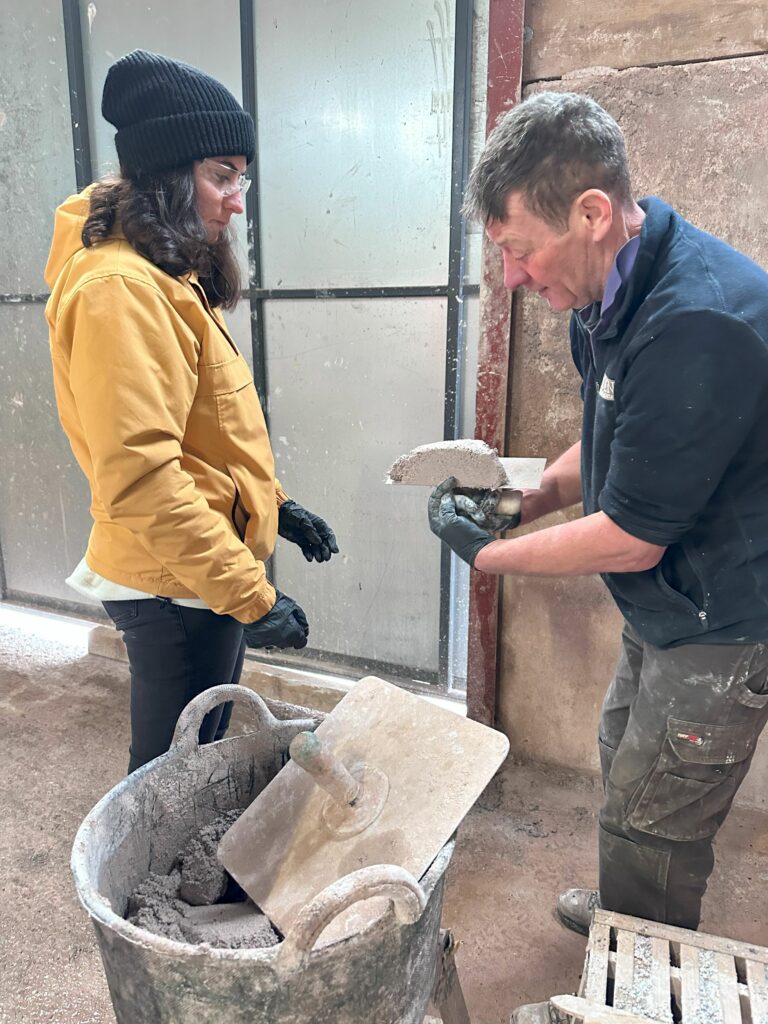
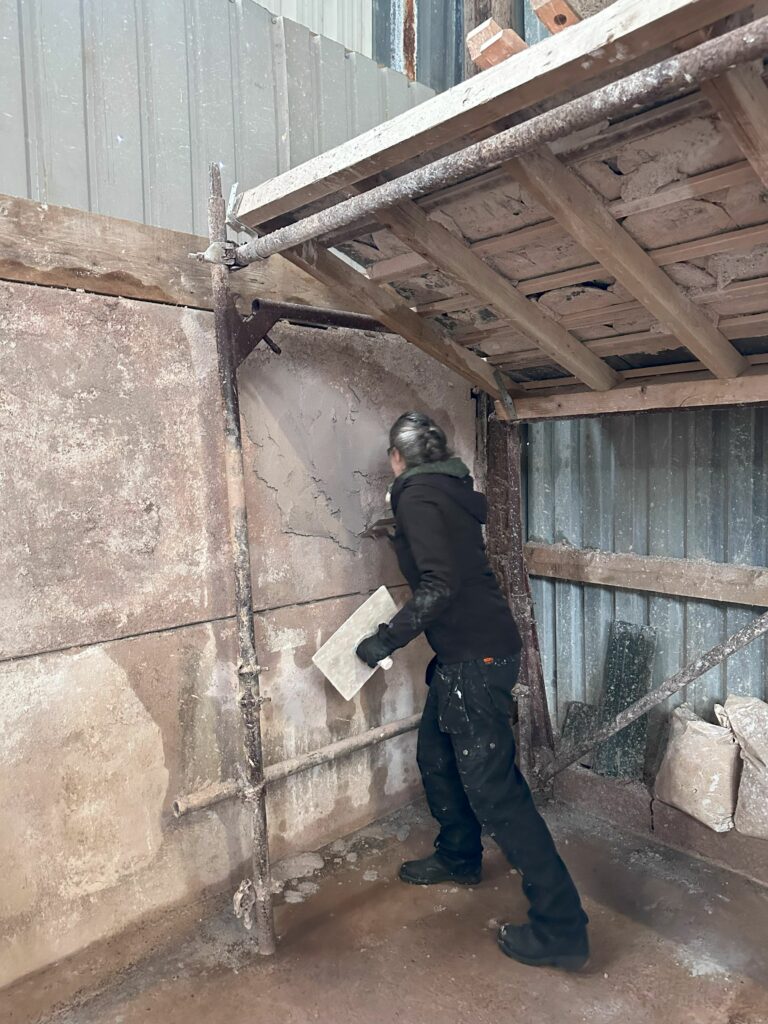
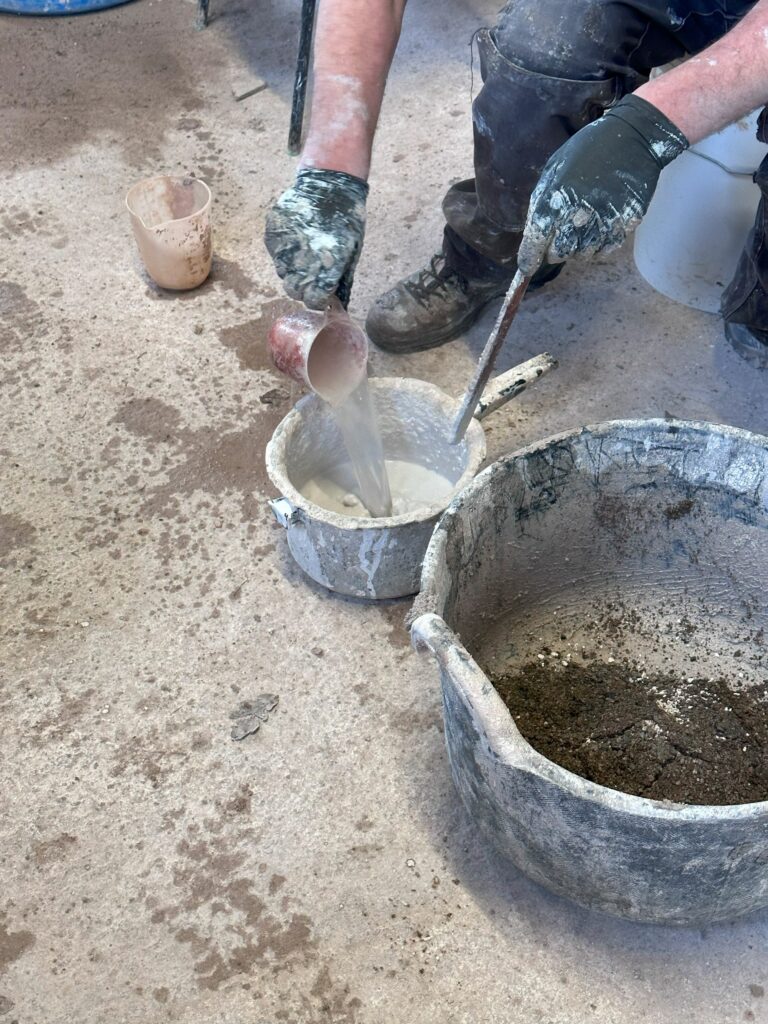
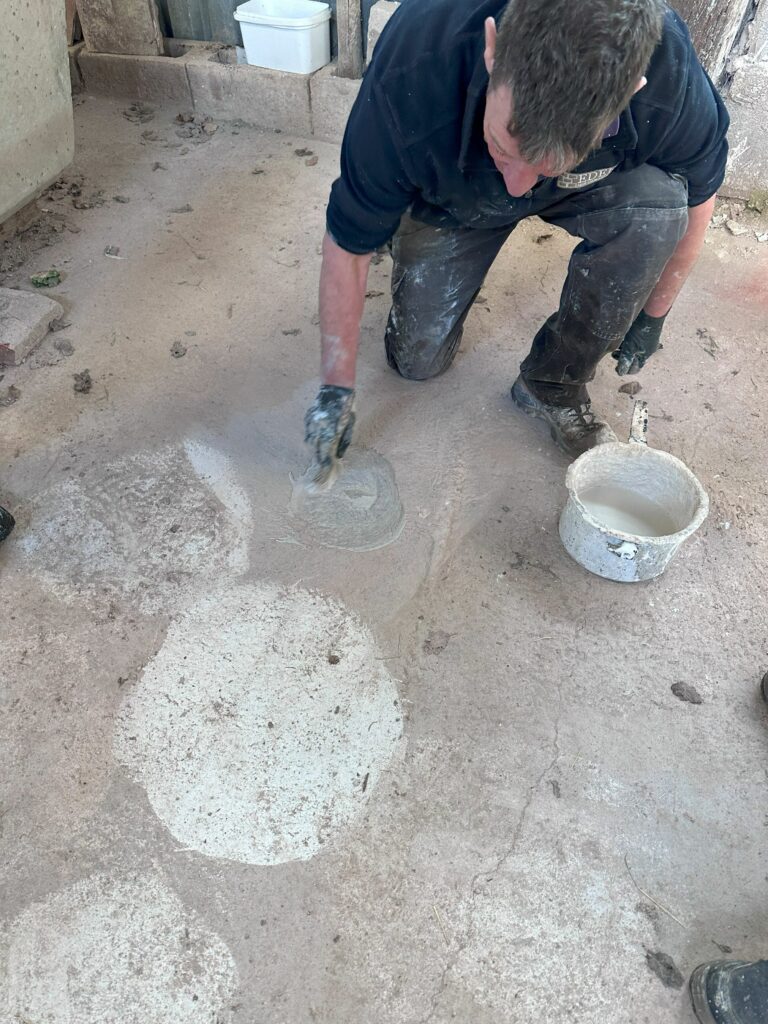
In addition to applying lime to walls, Eden Hot Lime also has rigs for applying lime to the underside of roofs and ceilings (wear goggles).
Working in construction and with a particular interest in historic buildings, we all found the day fascinating. However, we would encourage anyone with an interest in historic buildings, or doing work on your own property to get booked onto the course and have a go!